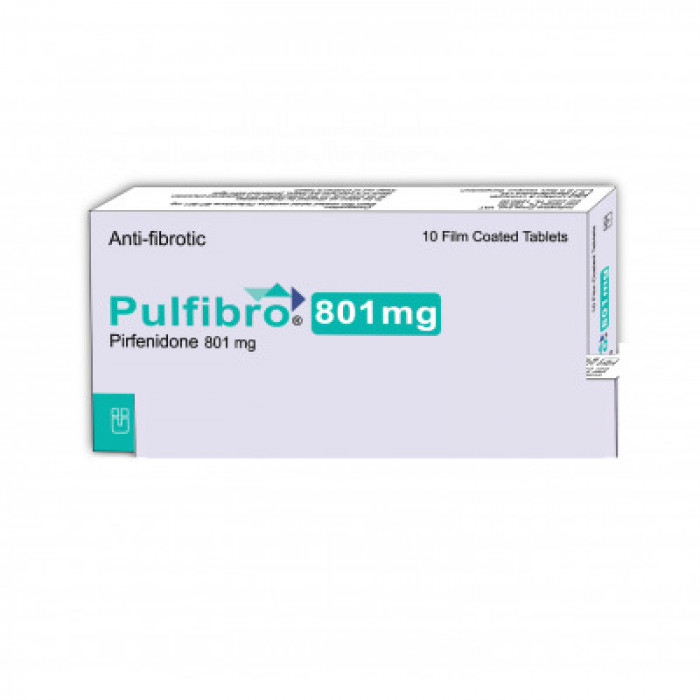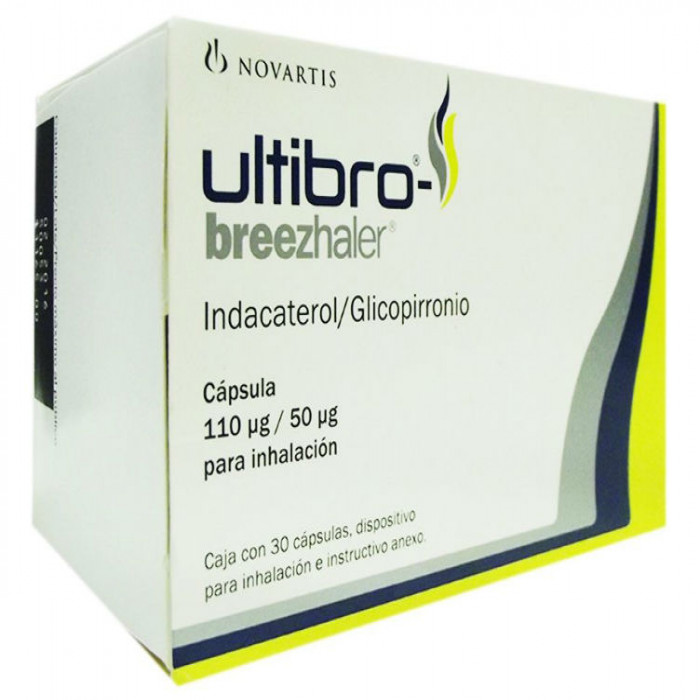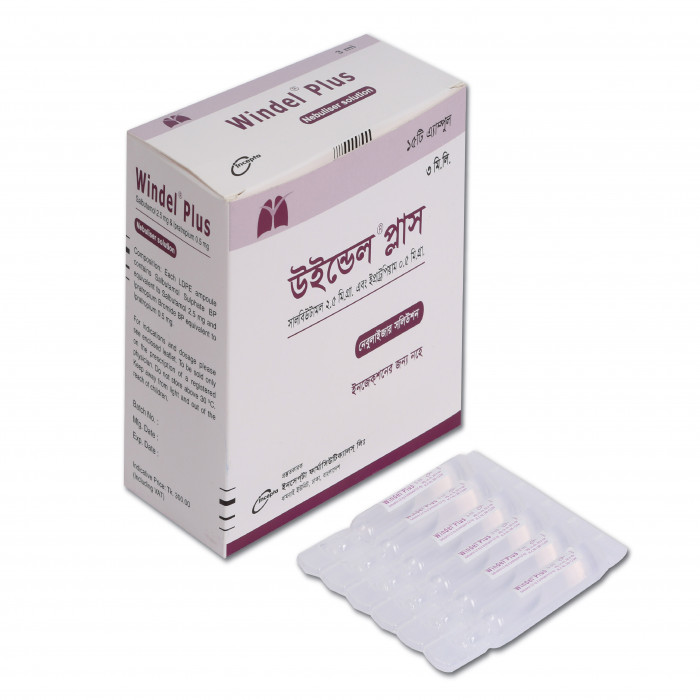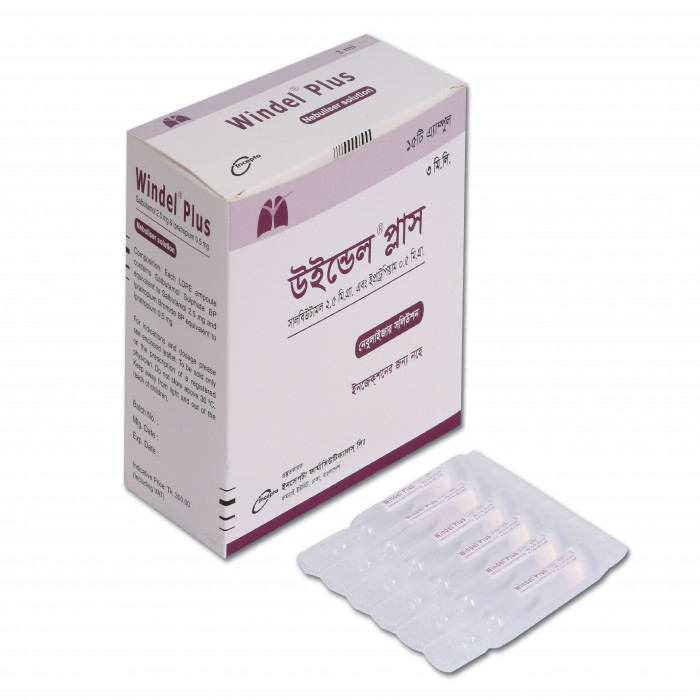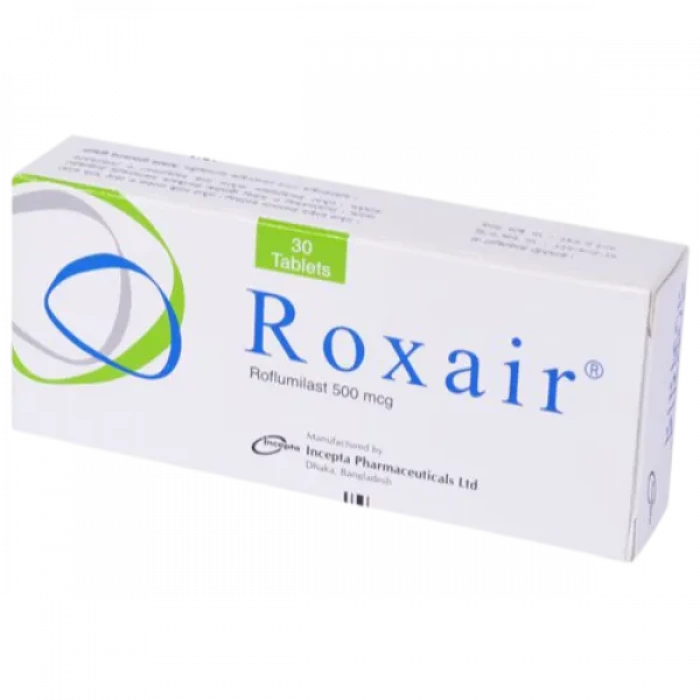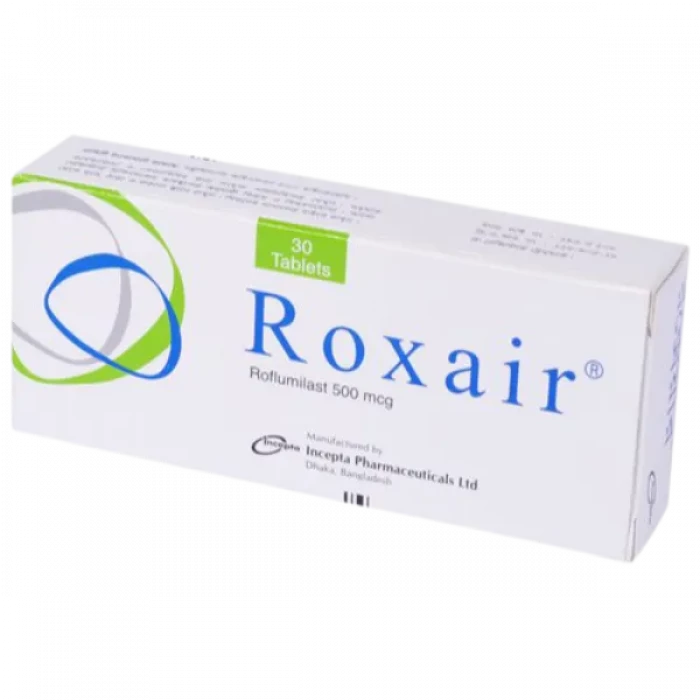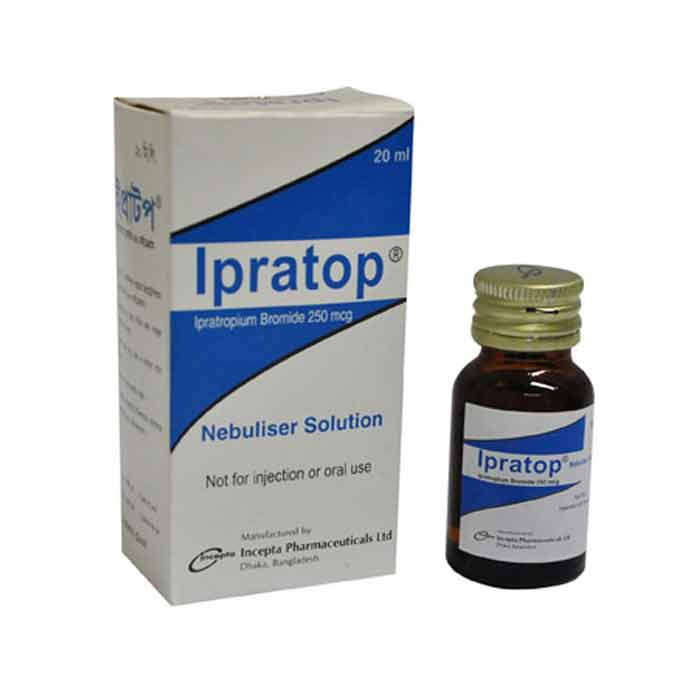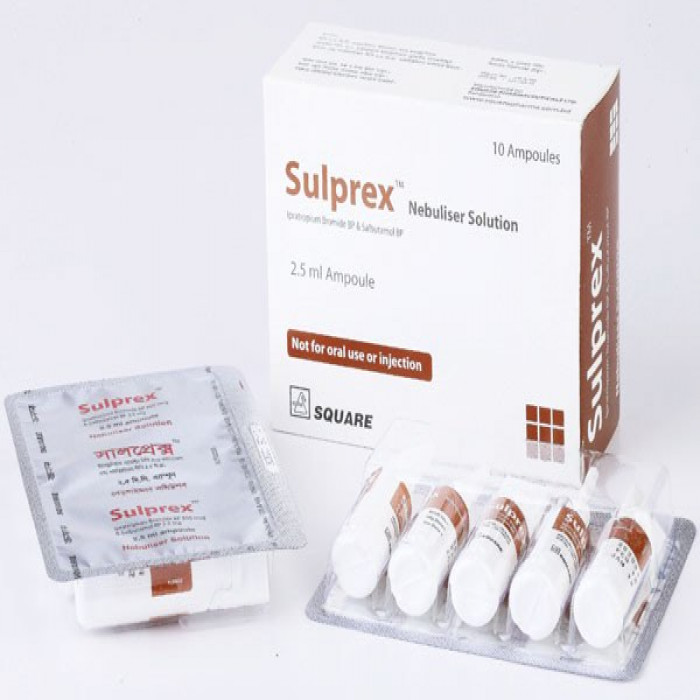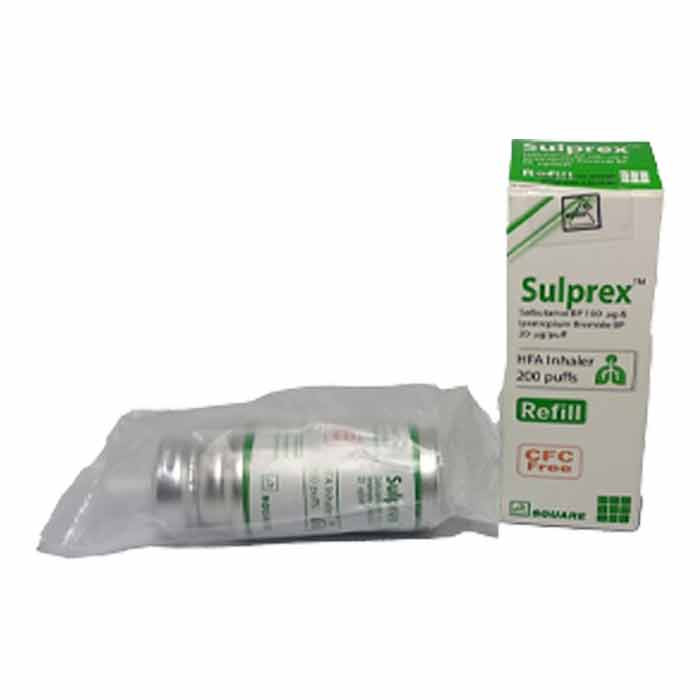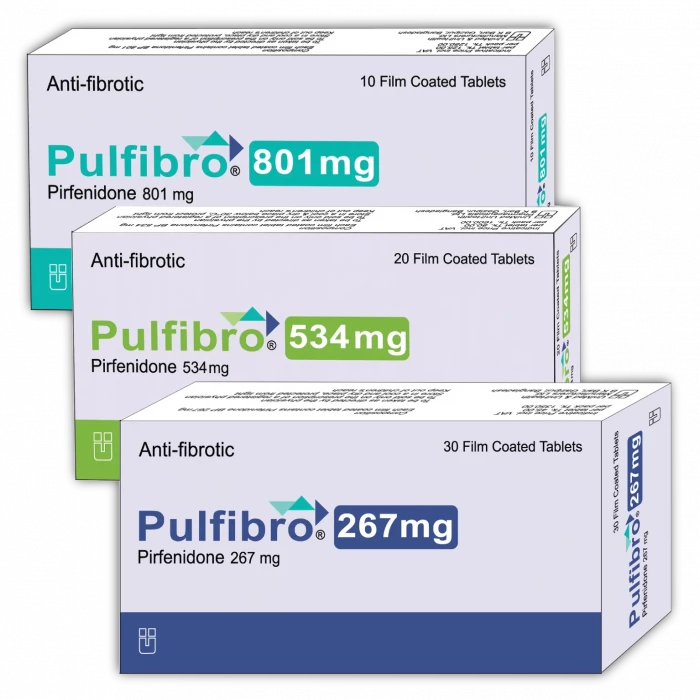
✔ 100% Authentic Product
👁️ Currently Viewing 782
Tablet Generic Name Pirfenidone 534 mg UniMed UniHealth

100% Genuine Products, Guaranteed
Safe & Secure Payments, Always
Fast, Secure & Efficient Delivery
Proper Packaging
 Cash on Delivery - All over Bangladesh
Cash on Delivery - All over Bangladesh Regular Delivery - 12-24 Hours, Dhaka City*
Regular Delivery - 12-24 Hours, Dhaka City* Regular Delivery - 24-48 Hours, All Over Bangladesh*
Regular Delivery - 24-48 Hours, All Over Bangladesh* ফ্রি ডেলিভারিঃ - ৯৯৯ টাকা+ অর্ডারে, ঢাকা
শহরে
ফ্রি ডেলিভারিঃ - ৯৯৯ টাকা+ অর্ডারে, ঢাকা
শহরে ফ্রি ডেলিভারিঃ - ২৯৯৯ টাকা+ অর্ডারে, ঢাকার
বাহিরে
ফ্রি ডেলিভারিঃ - ২৯৯৯ টাকা+ অর্ডারে, ঢাকার
বাহিরে
✅ Description:
Indications
In adults, pirfenidone is used to treat mild to moderate idiopathic pulmonary fibrosis (IPF).
Pharmacology
Pirfenidone is a tiny chemical with a wide spectrum of biologic activity that can be taken orally. Pirfenidone has been demonstrated to suppress collagen synthesis, down-regulate profibrotic cytokines, and reduce fibroblast proliferation in vitro.Because of decreased expression and direct suppression of the TGF-beta pro-protein convertase furin, pirfenidone reduces TGF-beta2 mRNA levels and mature TGF-beta2 protein. Pirfenidone also lowers the protein levels of matrix metalloproteinase (MMP)-11, a TGF-beta target gene and furin substrate implicated in carcinogenesis.
Dosage & Administration
Treatment with Pirfenidone should be initiated and supervised by specialist physicians experienced in the diagnosis and treatment of IPF. Upon initiating treatment, the dose should be titrated to the recommended daily dose of nine 267 mg tablets or one 801 mg tablet per day over a 14-days period for adult as follows:
Days 1 to 7: One 267 mg tablet administered three times a day (801 mg/day)
Days 8 to 14: One 534 mg tablets administered three times a day (1602 mg/day)
Day 15 onward: Three 267 mg tablets or one 801 mg tablet administered three times a day (2403 mg/day)
The recommended daily dose of Pirfenidone for patients with IPF is three 267 mg tablets or one 801 mg three times a day with food for a total of 2403 mg/day. Doses above 2403 mg/day are not recommended for any patient. Patients who miss 14 consecutive days or more of Pirfenidone treatment should re-initiate therapy by undergoing the initial 2-week titration regimen up to the recommended daily dose. For treatment interruption of less than 14 consecutive days, the dose can be resumed at the previous recommended daily dose without titration.
Dose adjustments and other considerations for safe use: Gastrointestinal events: In patients who experience intolerance to therapy due to gastrointestinal side effects, patients should be reminded to take the medicinal product with food. If symptoms persist Pirfenidone may be reduced to 1-2 capsules (267 mg-534 mg) 2-3 times/day with food with re-escalation to the recommended daily dose as tolerated. If symptoms continue, patients may be instructed to interrupt treatment for 1 to 2 weeks to allow symptoms to resolve.
Contraindications
Concomitant usage of fluvoxamine, severe hepatic impairment or end-stage liver disease, severe renal impairment (CrCl 30 ml/min) or end-stage renal illness necessitating dialysis.
Hepatic function: Elevations in ALT and AST levels greater than 3 times the upper limit of normal (ULN) have been documented in patients using Pirfenidone. These have very seldom been linked to concurrent increases in total serum bilirubin.Prior to starting Pirfenidone treatment, liver function tests (ALT, AST, and bilirubin) should be performed, as well as monthly for the first 6 months and then every 3 months after that. If the level of liver aminotransferases rises significantly, the dose of Pirfenidone should be reduced or the treatment stopped, according to the instructions mentioned below.The following dose modifications may be recommended for patients who have verified increases in ALT, AST, or bilirubin during treatment.
Side Effects
In clinical studies involving 1345 healthy volunteers and patients, the safety of Pirfenidone was assessed.The most commonly reported (10%) adverse reactions during clinical study experience with Pirfenidone at a dose of 2403 mg/day compared to placebo, respectively, were nausea (32.8% versus 13.3%), rash (28.7% versus 8.6%), fatigue (22.3% versus 13.3%), diarrhoea (21.7% versus 13.5%), dyspepsia (16.8% versus 5.5%), and photosensitivity reaction (12.2% versus 1.7%). Serious adverse reactions were recorded at similar frequencies among patients treated with 2403 mg/day of Pirfenidone and placebo in clinical studies. In two pivotal Phase 3 investigations, adverse events were recorded at a frequency of 2% in 345 individuals taking Pirfenidone at the indicated dose of 2403 mg/day. There are also adverse effects from post-marketing experiences listed. Adverse reactions are organized by System Organ Class (SOC), and within each frequency grouping, they are given in decreasing severity order.
Pregnancy & Lactation
There is no information on the use of Pirfenidone in pregnant women. In animals, pirfenidone and/or its metabolites are transferred through the placenta, with the possibility of pirfenidone and/or its metabolites accumulating in the amniotic fluid.Rats at high doses (1000 mg/kg/day) had their gestation lengthened and their embryonic viability reduced. It is advised to avoid using Pirfenidone during pregnancy as a preventative step.
Lactation: Pirfenidone or its metabolites are not known to be excreted in human milk. Based on available pharmacokinetic data in animals, pirfenidone and/or its metabolites are excreted in milk, with the possibility of pirfenidone and/or its metabolites accumulating in milk.It is impossible to rule out the possibility of a danger to the nursing infant. The benefits of breast-feeding for the infant and the benefits of Pirfenidone therapy for the mother must be considered when deciding whether to stop breast-feeding or stop taking Pirfenidone.
Therapeutic Class
Immunosuppressant
Storage Conditions
Store in a cold, dry, and light-protected location.
⚠️Disclaimer:
At ePharma, we’re committed to providing accurate and accessible health information. However, all content is intended for informational purposes only and should not replace medical advice from a qualified physician. Please consult your healthcare provider for personalized guidance. We aim to support, not substitute, the doctor-patient relationship.




